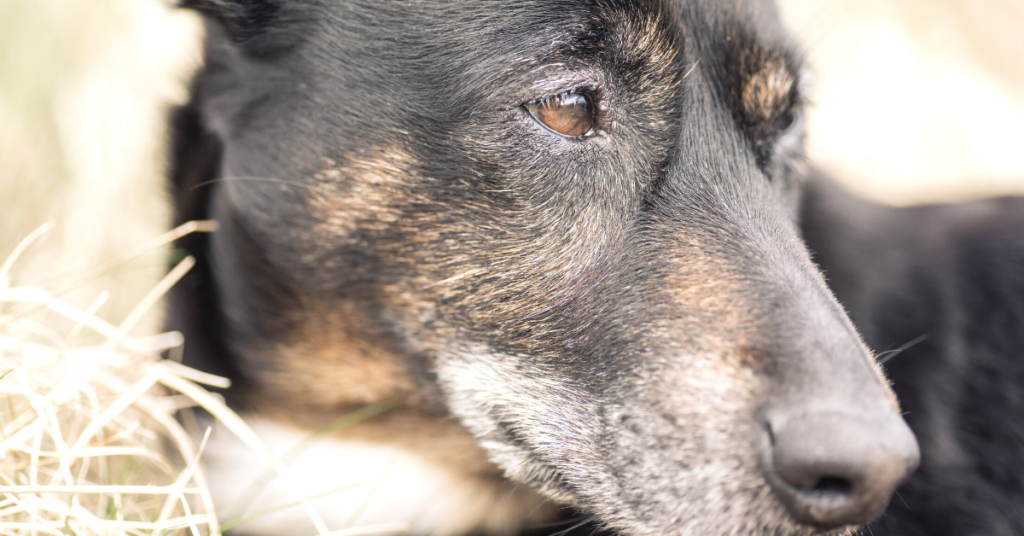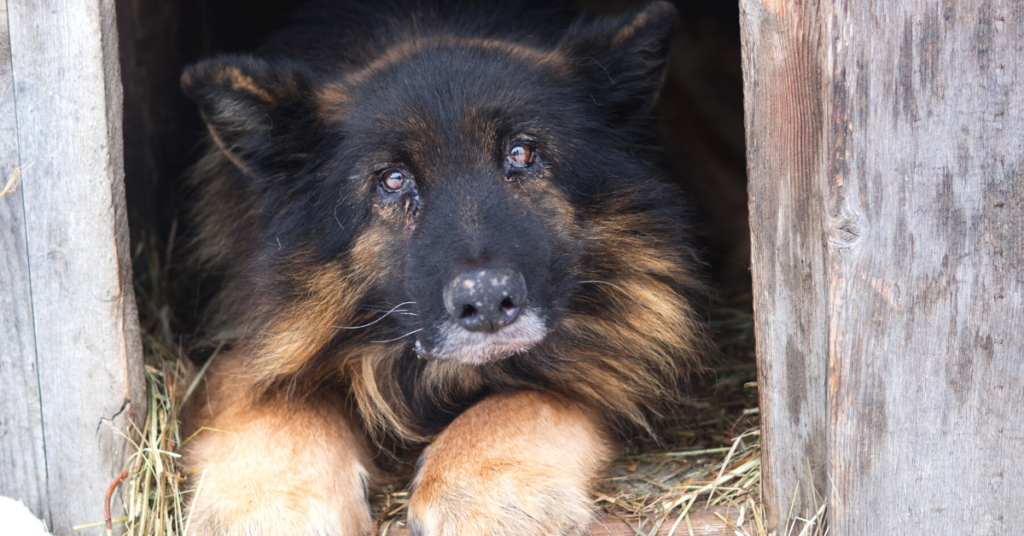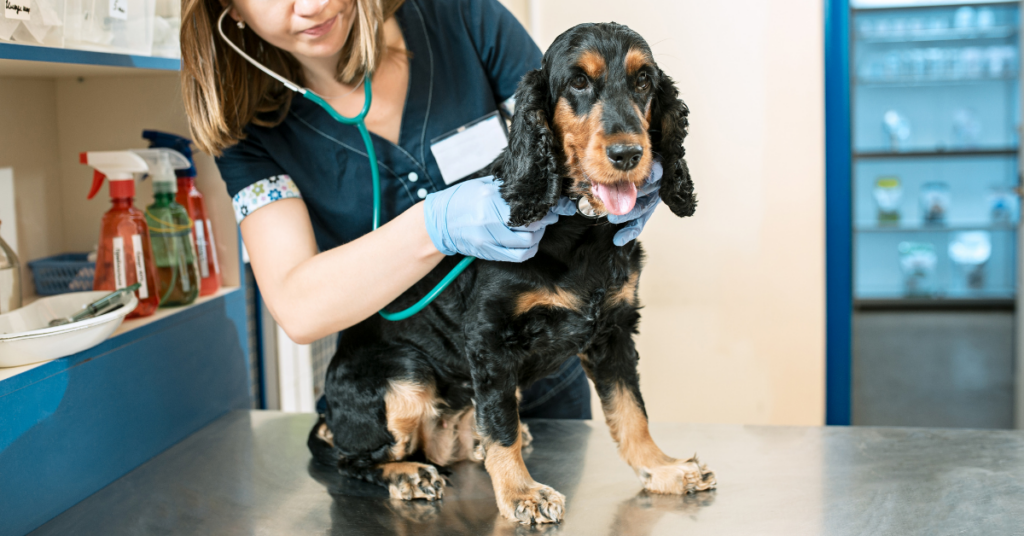Symptoms of Lymphoma in Dogs
If you’re worried about your pup, it’s important to know the symptoms of lymphoma in dogs.
Lymphoma is a common cancer in humans and dogs. Lymphoma cases in dogs make up 10-20% of all canine cancer cases.
This cancer affects the lymphocytes, which is a type of white blood cell associated with the immune system.
Usually, this cancer originates in places that are part of the immune system, like lymph nodes, the liver, and bone marrow.
It’s important for dog owners to understand lymphoma, to help in early diagnosis and getting the right treatment.
Knowing the symptoms of lymphoma in dogs can help you prepare.
What is Lymphoma?

Canine lymphoma is a cancer that affects the lymph nodes and lymphatic system. It can be confined to a certain area, or it can spread to other parts of the body.
The lymphatic system consists of lymph nodes, the spleen, tonsils, and lymph vessels. This system is responsible for the immune functions in the body as well as the movement of fluids.
Lymphoma is most common in middle aged and older dogs. Specific breeds are more prone to lymphoma than others.
Golden Retrievers, Boxer Dogs, Bullmastiffs, Basset Hounds, Saint Bernards, Scottish Terriers, Airedale Terriers, and Bulldogs all have higher risk of developing lymphoma.
The cause behind lymphoma in dogs is still unknown. However, dogs live in the same environment as we do, which makes them exposed to many cancer-causing environmental factors and toxic elements such as phenoxyacetic acid herbicides and magnetic field exposure.
Lymphoma can affect any organ in the body, specially the organs where most lymphoma cancers are found.
Types of Lymphoma

There are more than 30 different types of known canine lymphomas. The four most common types of lymphoma in dogs that owners should know about are:
1. Multicentric Lymphoma
This is the most common form of lymphoma. Almost 80-85% of lymphoma cases in dogs are multicentric. This type of lymphoma affects the lymph nodes and causes an enlargement.
Usually, the lymph nodes in the neck, chest, armpits, groin, and behind the knees are the most visible and the easiest to notice.
2. Alimentary Lymphoma
This is the second most common type of lymphoma. This type affects the gastrointestinal tract, and causes gastrointestinal symptoms.
3. Mediastinal Lymphoma
This type of lymphoma causes enlargement of the lymphoid organs in the chest such as the lymph nodes or the thymus. This type is rare.
4. Extranodal Lymphoma
This type of lymphoma usually affects organs such as the skin, eyes, kidneys, lungs, or nervous system. This type is rare. However, the most common extranodal lymphoma affects the skin and is known as cutaneous lymphoma.
Symptoms of Lymphoma in Dogs

The symptoms of lymphoma in dogs differ depending on the type of lymphoma. Most of the dogs do not show any clinical signs of illness at the time of diagnosis.
However, they often develop signs such as weight loss and lethargy if left untreated.
In the other less common types of lymphoma, symptoms depend on the organ that is affected.
Symptoms of Multicentric Lymphoma
The first symptom to show on dogs is swollen lymph nodes. They can become enlarged three to ten times the normal size.
The swellings are not painful, and feel like a hard, rubber like lump. Other symptoms include fever, weakness, dehydration, and anorexia, as the disease develops.
Symptoms of Alimentary Lymphoma
This type of lymphoma affects the gastrointestinal tract, which causes symptoms like vomiting, diarrhea, anorexia, weight loss, and abdominal pain.
Symptoms of Mediastinal Lymphoma
Symptoms of this type include difficulty breathing, coughing, and swelling of the face or front legs, and excessive thirst and urination.
Dogs will find it difficult to breathe, due to the swelling that is present in the chest or the collection of fluids within the chest.
Symptoms of Extranodal Lymphomas
Symptoms in this type differ depending on the organ it affects. The most common type which affects the skin known as cutaneous lymphoma has unique symptoms to each case.
Dogs with cutaneous lymphoma may have raised skin bumps or scattered scaly abrasions. Cutaneous lymphoma can also affect the mouth, which affects the lips, gums, and the roof of the mouth.
However, if extranodal lymphoma affects the lungs, it will cause difficulty breathing and respiratory issues. In addition, extranodal lymphoma in kidneys causes renal failure.
If the extranodal lymphoma occurs in the eyes, it can cause blindness. It can also cause seizures, if it affects the central nervous system, and can fracture bones if lymphoma occurs in the bones.
Diagnosis of Lymphoma in Dogs

Enlarged lymph nodes can occur due to infections or autoimmune diseases. This is why your vet will have to take samples to determine if the dog has lymphoma or some other illness.
To accurately diagnose lymphoma, the veterinarian will take a sample of the affected organ, using a fine needle aspirate. The vet will insert this needle into the enlarged lymph nodes or organ and take out some cells to examine.
These cells are diagnosed using either a microscope to look for any cancerous cells, or by a histopathologic tissue evaluation.
After the diagnosis, some veterinarians may recommend doing “staging tests”, to know how far the disease has developed through the dog’s body.
Your veterinarian may perform additional tests to extract more information about the lymphoma and develop a treatment plan.
For example, Immunohistochemistry test uses specialized stains to differentiate between two different types of lymphoma: B-cell lymphoma and T-cell lymphoma.
This test can provide information regarding prognosis.
Treatment of Lymphoma in Dogs

The most effective proven treatment for lymphoma in dogs is chemotherapy. The type of chemotherapy will differ depending on the type of the cancer.
The most common side effects of chemotherapy in dogs include loss of interest in foods & drinks, low energy, mild vomiting, and mild diarrhea.
The vet may also suggest doing radiation therapy or in some cases, surgery. Dogs don’t usually get sick under chemotherapy as humans. They rarely lose their hair except for some breeds such as Poodles, Bichon Frise, and Old English Sheepdogs.
Additionally, chemotherapy drugs may be administered to dogs through the veins to kill cancer cells and prevent them from expanding.
If chemotherapy is not an option due to the dog’s overall health or other factors, your vet may suggest prednisone for easing the pain. Prednisone doesn’t treat lymphoma, but can reduce the severity of the symptoms.
When to See a Veterinarian

If you notice any of the signs of lymphoma on your dog or you suspect that your dog has lymphoma, it’s time to call your vet.
Your vet will help determine if your dog has lymphoma, recommend the available treatment options, and what to expect.
Early diagnosis of lymphoma and treatment can prolong your dog’s life or help in partial or complete remission of the cancer for a period of time.
Partial remission means that the cancerous cells have been reduced to approximately 50%. Complete remission is when the cancer is not detectable in a screening.







